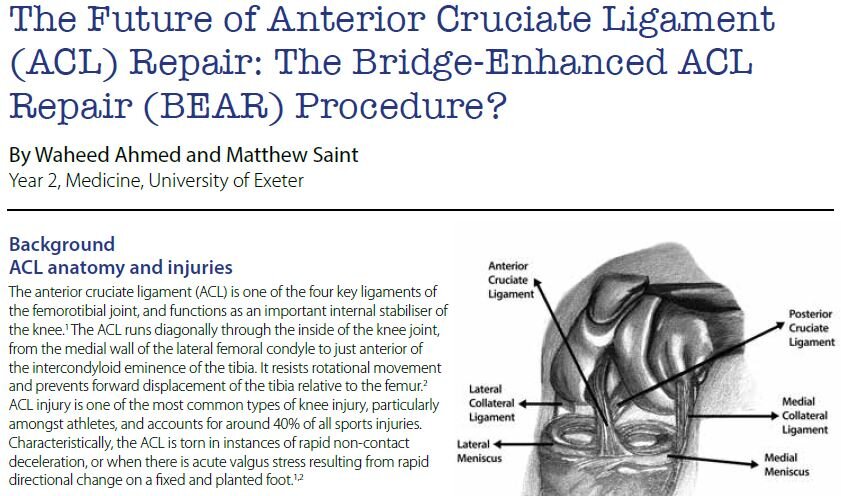I continued doing research on BEAR trial, including articles from ResearchGate, BEAR Trial 2 at Boston Childrens
Apparently an ACL tear is one of the most common types of knee injury, accounts for around 40% of all Sports Injuries.
Treatment can be surgical or conservative (which is reserved for sedentary patients). Physically active patients seek surgical treatment to restore functional strength to the ligament. The current standard surgery uses a graft made by stripping perfectly fine tendon tissue or ligament from elsewhere (hamstring, patella, etc.). In addition to removing good tendon and having to recover from this in addition to the knee injury, I’m concerned from the high risk of early onset osteoarthritis in the injured knee from the standard surgery.
Rehabilitation from this takes 9 months to a year to regain the loss of quadricep strength and knee flexibility caused by having a portion of tendon removed.
From what I understand BEAR uses stitches and a bridging scaffold (a sponge injected with the patient’s blood) to stimulate healing of the torn ACL. This maintains a clot that facilitates ACL regrowth by providing barrier from synovial fluid effects.
Another way of saying it:
a suture repair to bridge the gap between torn ligament tends & incorporates a bioactive scaffold to promote self-repair. The sponge is inserted into the area where the torn ACL once was, soaked in the patient's own blood and then attached to both torn ends of the damaged ACL. Over time, the sponge acts as a "bridge" and allows the ACL to reattach itself, thus re-growing a fully intact ligament.
The bovine scaffold acts as a bridge that lasts in the joint long enough to allow the ACL ends to heal back together.
Patients then wear a restrictive hip-to-ankle post operative brace for 6 weeks, at which point they switch to another sports brace.
Recipients so far demonstrated faster recovery time than graft recipients, & hamstring strength at 3 months was significantly better in BEAR patients.

